ORIF - Palmar plate
1. Preliminary remarks
Fracture assessment and decision making
These are complete articular fractures with both simple articular and metaphyseal components. They may involve a dorsoulnar (posteromedial) articular fragment, or a sagittal or frontal articular fracture line.
Anatomical reduction and stabilization of these fractures are also essential because of the functional implications of the involvement of the distal radioulnar joint.
Once reduced, the fragments may all be held sufficiently with a palmar locking plate.
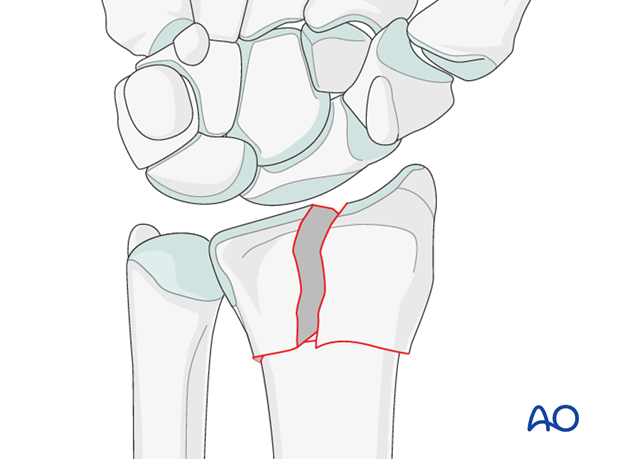
Palmar plate
Advances in plate design have provided angular stable fixation. This allows enhanced stability and ease of application, even in the presence of osteoporotic bone. Plates with variable angle locking screw options may be useful.
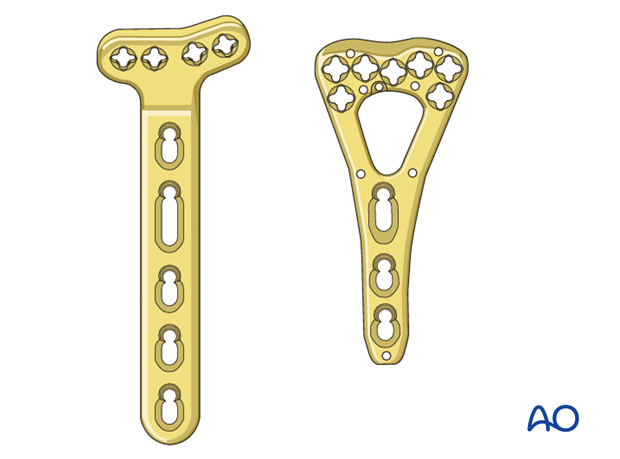
Provisional reduction in displaced fractures
Reduction is achieved by applying longitudinal traction either manually or using Chinese finger traps.
The reduction is maintained by a temporary splint.
If definitive surgery is planned, but cannot be performed within a reasonable time scale, a temporary external fixator may be helpful.
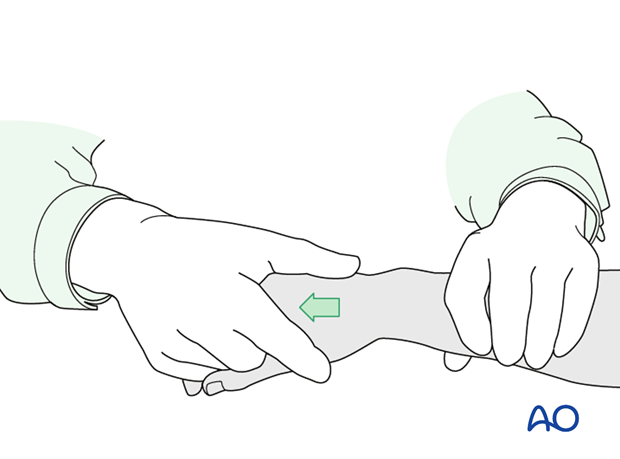
2. Associated injuries
Median nerve compression
If there is dense sensory loss, or other signs of median nerve compression, the median nerve should be decompressed.
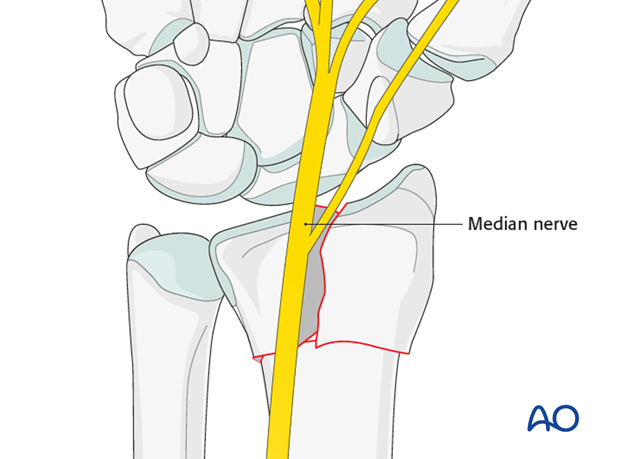
Associated carpal injuries
These injuries may be associated with shearing injuries of the articular cartilage, scaphoid fracture and rupture of the scapholunate ligament (SL). Every patient should be assessed for this injury. If present, see carpal bones of the Hand module.
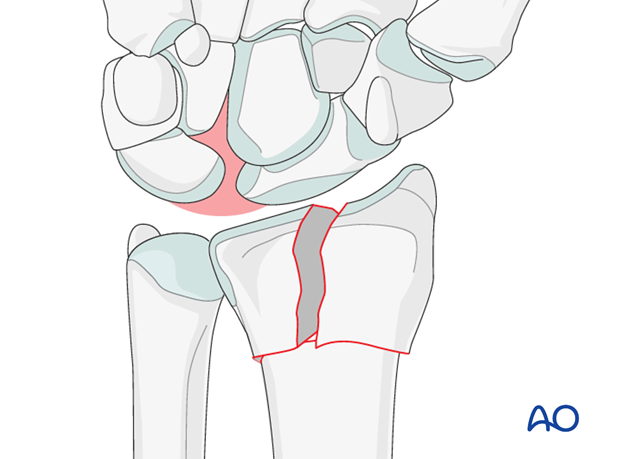
DRUJ/ulnar injuries
These injuries may be accompanied by avulsion of the ulnar styloid and/or disruption of the DRUJ. If there is gross instability after the fixation of the radial fracture, it is recommended that the styloid and/or the triangular fibrocartilaginous disc (TFC) is reattached. This is not common in simple fractures, but may occur with some high energy injuries.
The uninjured side should be tested as a reference for the injured side.
It may not be possible to assess DRUJ stability until the fracture has been stabilized (as described below).

3. Patient preparation and approach
Patient preparation
This procedure is normally performed with the patient in a supine position for palmar approaches.
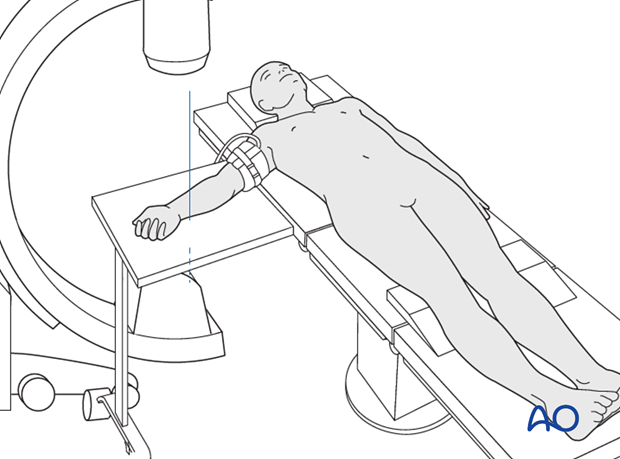
Approach
There are two palmar surgical approaches to the distal radius – a modified Henry approach to the radius and a more ulnar approach, designed to expose the median nerve as well as the distal radius.
A thorough knowledge of the anatomy around the wrist is essential. Read more about the anatomy of the distal forearm.
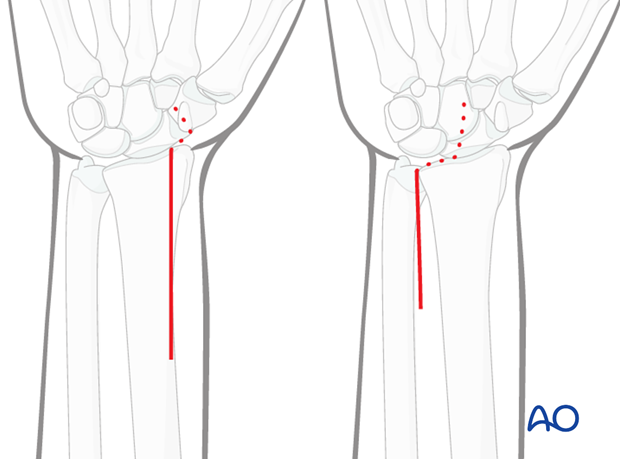
4. Open Reduction
Anatomical reduction may be achieved by direct manipulation, using a dental pick or similar hook.
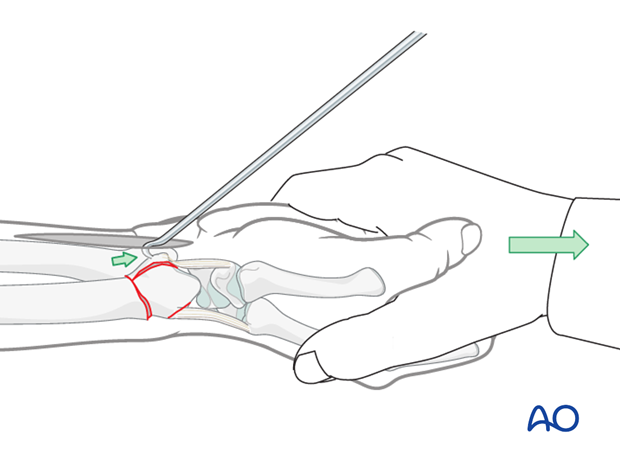
A smooth K-wire is placed through the radial styloid across the fracture site into the opposite radial cortex to secure the reduction.
Further K-wires may be inserted to reduce and hold the remaining articular fragments.
Accurate anatomic reduction of the articular surface must be confirmed, before the plate is applied.
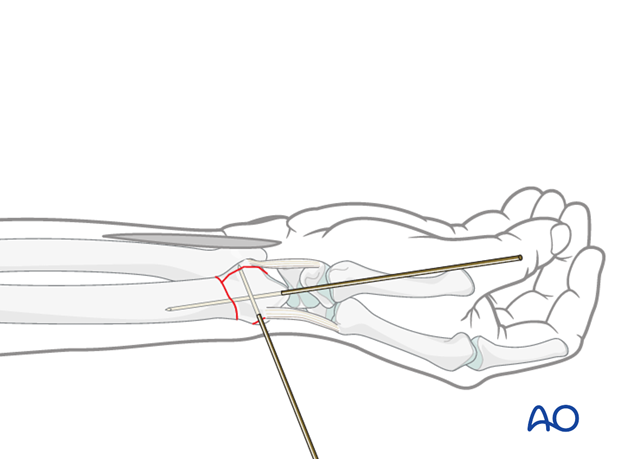
5. Plate fixation
Plate insertion
Apply the plate to the bone. The distal end of the plate should end at the anatomic watershed zone of the distal radius.
Insert a screw through the oblong plate hole in the proximal radial fragment. Select a screw which is long enough to engage both cortices.
Insert the screw. Before fully tightening it, check the plate position using intraoperative imaging, adjusting the position of the plate as necessary.
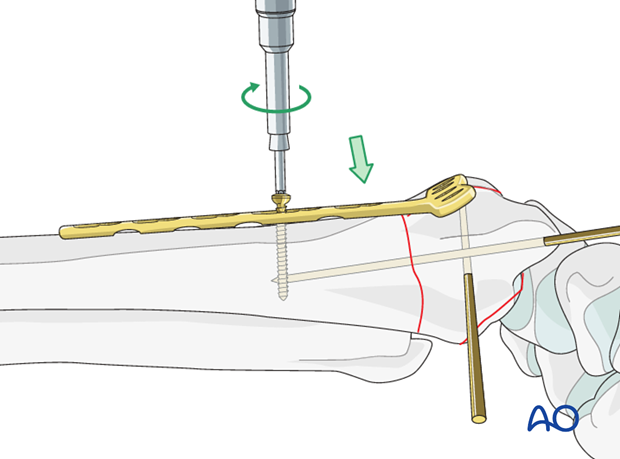
The initial distal screw should be placed through the ulnar sided screw hole.
The reason for this is that if the initial screw is placed on the radial side it will block accurate imaging of the ulnar screw placement.

A sagittal image is obtained with the angle of the X-ray beam directed 20° obliquely to the radius to confirm that the screw is not penetrating the radiocarpal joint.
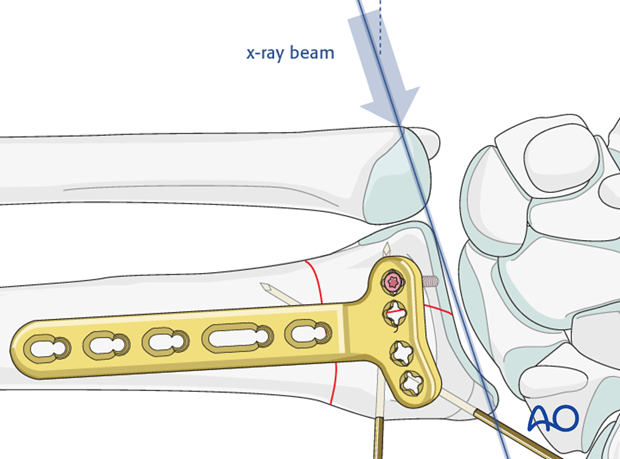
Insert remaining screws
Insert distal locking head screws. Ideally each fragment should have at least two screws, but this is not always practical.
Then insert at least two more proximal screws.
Remove the K-wires.
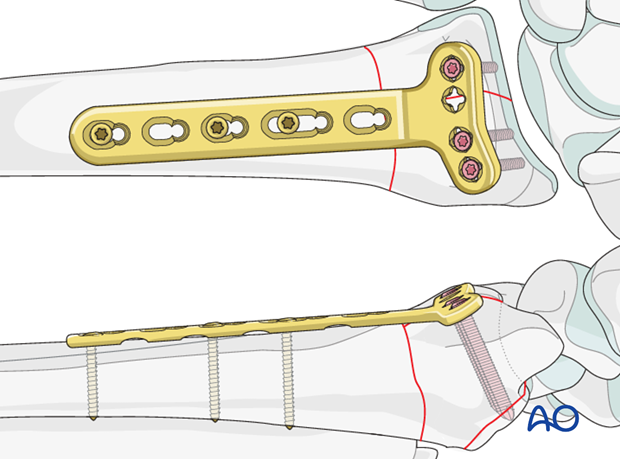
6. Assessment of Distal Radioulnar Joint (DRUJ)
Before starting the operation, the uninjured side should be tested as a reference for the injured side.
After fixation, the distal radioulnar joint should be assessed for forearm rotation, as well as for stability. The forearm should be rotated completely to make certain there is no anatomical block.
Method 1
The elbow is flexed 90° on the arm table and displacement in dorsal palmar direction is tested in a neutral rotation of the forearm with the wrist in neutral position.
This is repeated with the wrist in radial deviation, which stabilizes the DRUJ, if the ulnar collateral complex (TFCC) is not disrupted.
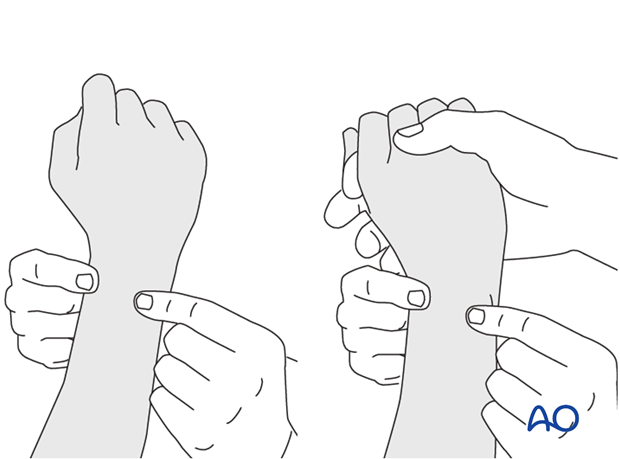
This is repeated with the wrist in full supination and full pronation.
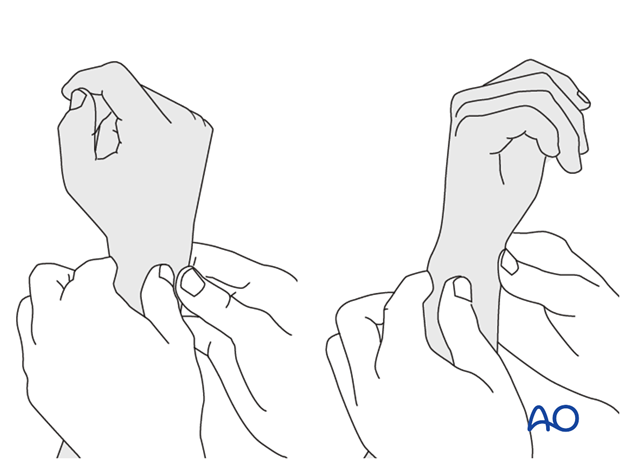
Method 2
To test the stability of the distal radioulnar joint, the ulna is compressed against the radius...

...while the forearm is passively put through full supination...

...and pronation.
If there is a palpable “clunk”, then instability of the distal radioulnar joint should be considered. This would be an indication for internal fixation of an ulnar styloid fracture at its base. If the fracture is at the tip of the ulnar styloid consider TFCC stabilization.
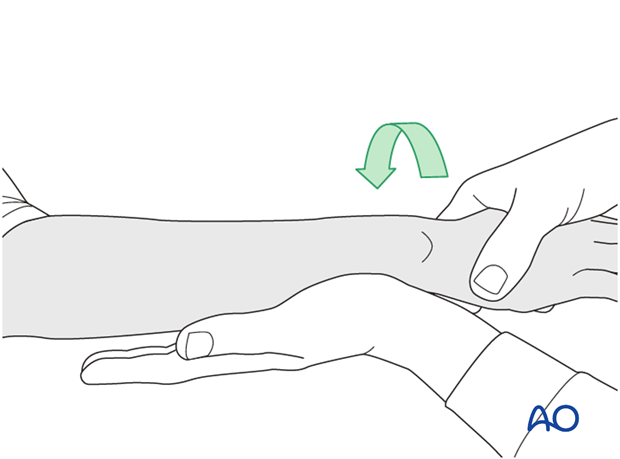
7. Aftercare
Functional exercises
Immediately postoperatively, the patient should be encouraged to elevate the limb and mobilize the digits, elbow and shoulder.
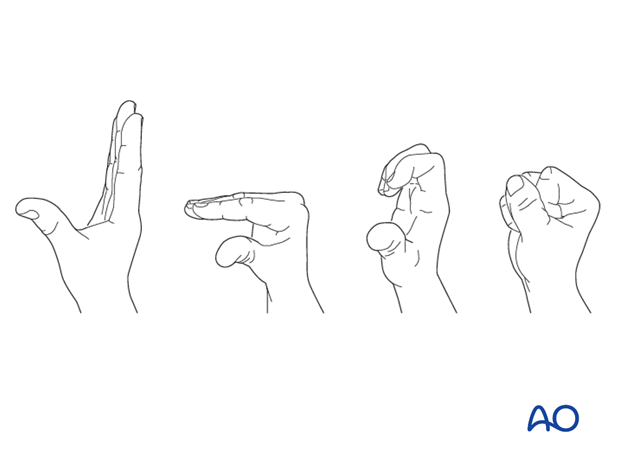
Some surgeons may prefer to immobilize the wrist for 7-10 days before starting active wrist and forearm motion. In those patients, the wrist will remain in the dressing applied at the time of surgery.

Wrist and forearm motion can be initiated when the patient is comfortable and there is no need for immobilization of the wrist after suture removal.
Resisted exercises can be started about 6 weeks after surgery depending on the radiographic appearance.
If necessary, functional exercises can be under the supervision of a hand therapist.

Follow up
See patient 7-10 days after surgery for a wound check and suture removal. X-rays are taken to check the reduction.
Implant removal
Implant removal is purely elective but may be needed in cases of soft-tissue irritation, especially tendon irritation to prevent late rupture. This is particularly a problem with dorsal or radial plates. These plates should be removed between nine and twelve months.













